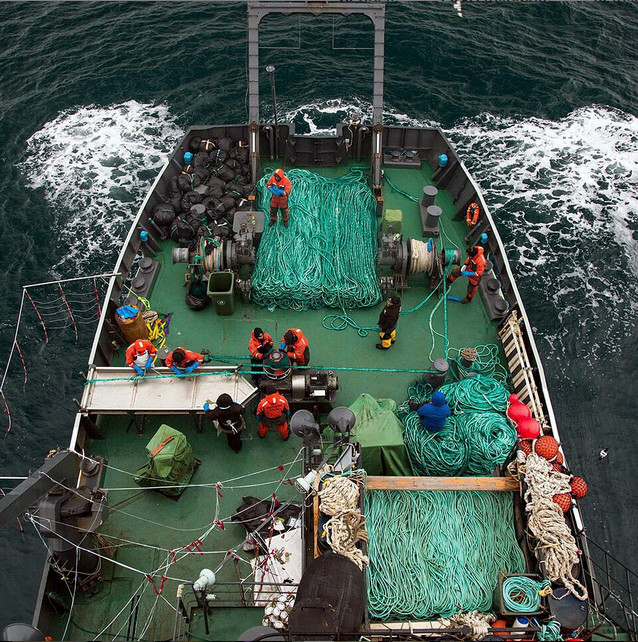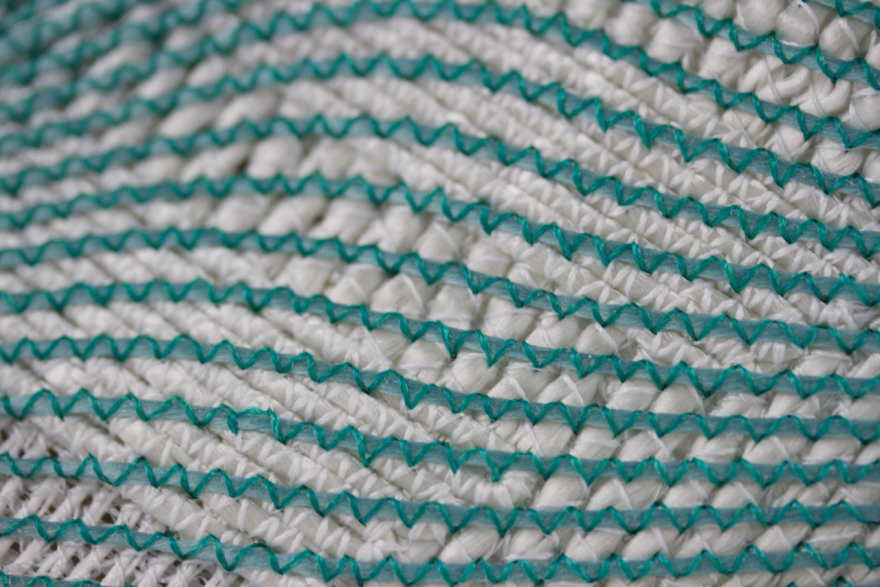
How to Make Sneakers Out of Trash: Designing the Adidas x Parley Ocean Shoe
Collaborating on a Prototype Made Out of Recycled Ocean Plastic Debris
Plenty of people tout innovative uses for recycled plastic, from vertical gardens made out of discarded plastic bottles to this unnecessarily robust coin purse. But, at the end of the day, many of these designs fall short because they're not creating a product that is desirable when divorced from the fact that they are, in fact, byproducts of waste.
 Enter a caption (optional)
Enter a caption (optional)The adidas x Parley is an exception to that paradigm—a shoe from recycled plastic that you actually want to wear, not just because you're saving the earth, but because it looks good, too. As you might surmise from the name, adidas x Parley is the product of a collaboration with Parley for the Oceans, an initiative that invites creators to raise awareness and protect ocean life through various projects. To bring this project to life, adidas also reached out to long-time collaborator Alexander Taylor, a London-based industrial designer.
 Enter a caption (optional)
Enter a caption (optional)The environmentally-friendly sneakers use two kinds of recycled plastic: PET, which you probably know since water bottle manufacturing has made it nearly ubiquitous, and nylon 6 gill-net, a material salvaged off the coast of Africa from illegal fishermen. "It is just part of the 72 [kilometers] of net which was pulled in by hand and brought back to port in La Rochelle prior to sending a small amount to us," Taylor says. "The white part of the shoe is recycled PET, which was produced using PET rubbish collected during a clean up operation in the Maldives in November last year."
 Enter a caption (optional)
Enter a caption (optional)Taking after adidas' already iconic running shoe silhouette, the adidas x Parley features a thin sole and sleek form, but diverges with its stylized exterior— concentric layers of teal nylon woven around the upper of the sneaker with a white, bubbly-textured PET sole. "This was a very special project in many ways—one of which being that we were able to create a design that could stand outside the more familiar and recognizable [adidas] lines . . . something which I was very conscious of was that [the shoes] should also be in some way intuitive to the cause," explains Taylor. "The 'wave' graphic came naturally, following the shell pattern of the shoe, and we worked and developed that design and graphic for the original shoes." The upper alone repurposes 16.5 plastic bottles and 13 grams of nylon.
Due to an unusually strict timeline (Taylor only had a few weeks to design and produce the kicks in order to officially unveil them at the United Nations earlier this year), the designer was forced to work quickly, using electrical wire to swiftly execute his first functional prototypes until the final material was ready. "It was really only a matter of [6] days to create the first couple of pairs which were presented at the UN," Taylor says.
That initial prototype with the final materials, while successful in proving the concept, turned out to be too stiff for actual wear. After the launch, Taylor and his team went back to the drawing board, experimenting with new ways of manufacturing and integrating the plastic.
"Every time we received a new material or slightly different weight, quality— something happened which was unexpected and then, of course, you have to re-think," Taylor says. "Even to retain the graphic with a different scale of green gill-net was a challenge." As with any adidas shoe, performance played an integral role, so each prototype had to be tested across hundreds of miles for endurance, as well as pass strenuous flex tests to ensure durability.
 Re-engineered gill net bobbins: The white bobbins are PET, reprocessed using plastic collected during a clean-up operation in the Maldives and the green bobbins are nylon form illegal fishing deep sea gill nets, salvaged off the coast of West Africa.
Re-engineered gill net bobbins: The white bobbins are PET, reprocessed using plastic collected during a clean-up operation in the Maldives and the green bobbins are nylon form illegal fishing deep sea gill nets, salvaged off the coast of West Africa. After a year of engineering and rejiggering, the team arrived at a process that worked well, one which required grinding the nylon plastic to a powder and then extruding it. "This process required a huge amount of work by Kelli George in the Portland material development team," Taylor says. "The gill-net is nylon 6, perhaps one of the worst types of plastic to work with, so the first focus was to make this [material] soft enough for comfort and to work mechanically on the shoe. [It took] many rounds of processing, but the material now on the bobbins is such a high quality even when compared to virgin materials. It's amazing."
Turns out, salvaging used fishing nets from the ocean poses its own unique set of challenges. "I remember with the first shoe, I had a conversation with John Warner (green chemist, and friend to Parley) and he was telling me how he had to first try and get rid of the smell of rotting fish, as well as all the lead and foreign articles caught in the net," Taylor says. "Subsequently, the cleaning aspect of the material is still relatively 'low tech' however, this is just one of the process's challenges which still needs to be developed."
 Enter a caption (optional)
Enter a caption (optional)For the final construction of the shoe, adidas uses an embroidery technology commonly found in the automotive and aerospace sectors. Recycled plastic is towed off the bobbin and laid onto the machine bed, where it is then stitched over itself to build up multiple layers. "The advantage of this technology from a performance context is the idea that the network of material can be engineered in a way that responds to biomechanics and the athlete's or consumer's requirements for support and flexibility variation," Taylor says. "In addition to building the layers, we are also able to control the direction of the fibers and filaments to create the best possible structures. With regards to efficiency of material, we only need to lay down the specific material required, resulting in practically zero waste."
Despite overcoming a slew of challenges to bring adidas x Parley to production, the shoes won't be going to mass production anytime soon, partially due to the significant amount of hand-labor required for each pair. "There were many challenges and there still are many elements we are working on in order to refine further and continue developing to ensure we have the best possible product," Taylor says.
Those interested in the upcycled kicks will have to move fast. Adidas is only giving away 50 pairs of the limited edition shoes to individuals lucky—and creative— enough to enter their Instagram contest. Announced earlier this month in time for World Oceans Day, the contest invites sneaker-heads and micro-filmmakers alike to create an Instagram video sharing how they'll reduce single-use plastic from their lives. The contest runs until July 31 (complete rules can be found on adidas' social media accounts).
-
o1Favorite This
-
QComment
K
{Welcome
Create a Core77 Account
Already have an account? Sign In
By creating a Core77 account you confirm that you accept the Terms of Use
K
Reset Password
Please enter your email and we will send an email to reset your password.

